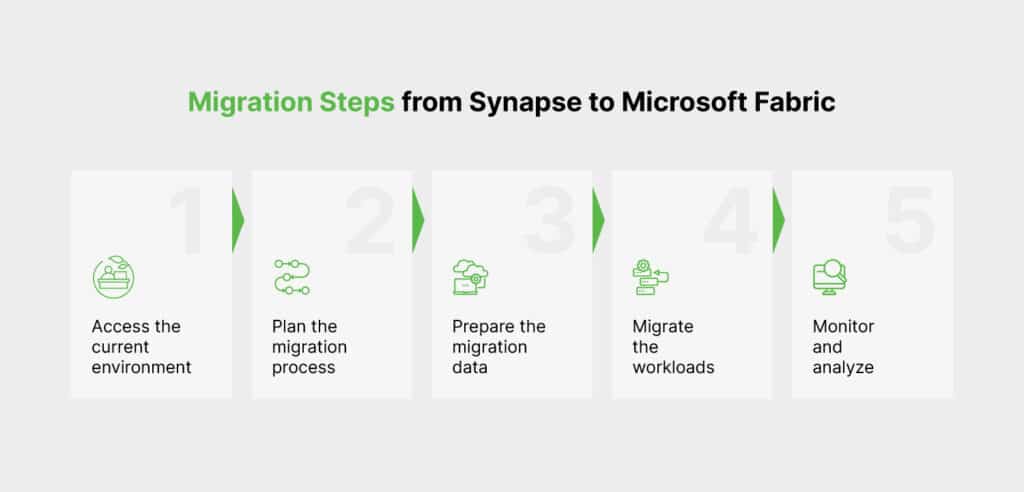
Data & AI Evangelist

Principal Data Architect
Subscribe to the newsletter
The way we access and consume information has changed drastically. We no longer rely solely on static data. Instead, we seek interactive, on-demand, and readily accessible information to make decisions consciously and unconsciously. This shift has been powered by keyword-based search, big data, and streaming data ingestion.
Amidst this evolving data landscape, the business world finds itself grappling with challenges such as data silos, limited scalability, and gaps in real-time insights. All these challenges have become inherent in the data journey, compelling businesses to seek innovative solutions; Microsoft Azure Synapse analytics – a game changer in the data analytics landscape for data engineers, data scientists, and business analysts has emerged as a powerful solution to resolve these challenges.
This robust platform addresses existing challenges and positions organizations to thrive in the ever-evolving landscape of data-driven decision-making.
Through this blog post, let’s understand the role of Azure Synapse Real-time Analytics within Microsoft Fabric and its transformative impact on companies, data scientists, and business users. Discover how it facilitates the extraction of valuable insights and enables the seamless analysis of real-time data streams.
Continue reading: Introducing Microsoft Fabric: A data-driven blueprint for modern enterprises.
What is Azure Synapse Analytics?
“Azure Synapse Analytics is a cloud-based analytics service designed to bring together big data and data warehousing into one unified platform to allow users to analyze large volumes of data for business intelligence and reporting purposes.”
The true power of this real-time analytics platform lies in its ability to empower companies with actionable analytics derived from their data. The versatile architecture of Synapse, including Synapse SQL, Spark, Synapse pipelines, and Synapse Studio, provides a unified environment for end-to-end analytics that goes beyond the limitations of traditional data processing methods.
With platform integration with Power BI and Azure Machine Learning, Synapse provides a unified experience to ingest, prepare, manage, and serve data for immediate BI and machine learning needs.
Additionally, this unified analytics platform helps companies understand their customer behavior, optimize operational efficiency, and navigate market dynamics to sustain a leading position in the market.
But Synapse doesn’t stop here. Synapse Real-Time analytics within the Microsoft Fabric ecosystem allows businesses to sense, analyze, and instantly generate real-time insights.
With so much hype around Microsoft Fabric, the leading concern of most Synapse users is:
Will Fabric replace Synapse?
No, Microsoft Fabric will not replace Synapse. According to Microsoft, Fabric is an evolution of Synapse analytics. Rather than replacing it, Fabric will enhance real-time data processing functionalities within the Microsoft Fabric ecosystem.
While Synapse excels in unified data warehousing and analytics across diverse data sources, Synapse Real-Time Analytics allows immediate real-time analysis and reaction to unfolding events instantly and intelligently.
With Real-Time Analytics in Microsoft Fabric, organizations can now focus and scale up their analytics solution while democratizing data for the needs of both the data scientist and data engineer.
Having said that, Fabric and Synapse Real-time Analytics will not replace each other but rather enhance the functionalities of Azure Synapse Analytics, helping businesses propel toward real-time insights and data-driven decisions.
So, businesses concerned about the potential impact of Microsoft Fabric on their existing Synapse infrastructure for data services should not worry about a replacement. Instead, they should recognize Fabric as a strategic move by Microsoft to enhance the analytics ecosystem.
“Microsoft has no current plans to retire Azure Synapse Analytics. Customers can continue to deploy, operate, and expand the PaaS offering of Azure Synapse Analytics”, reports Microsoft.
Synapse Real-Time Analytics is now Real-Time Intelligence
Built on existing real-time analytics and data activator, real-time intelligence brings new features that make real-time data insights accessible and user-friendly for all users, regardless of their skill levels. Real-Time Intelligence gives data pros, analysts, and business teams the power to work with high-speed, detailed data. By processing, analyzing, and visualizing this data in real time, organizations can make quicker, smarter decisions when it matters most.
Despite the name ‘real-time,’ valuable insights don’t require a constant, high-speed data stream. Real-Time Intelligence provides event-driven (not schedule-based) solutions, empowering you to make timely, well-informed decisions as events happen.
Read in detail: Real-Time Intelligence in Microsoft Fabric: Data analytics for enhanced visualization.
Functionalities of Synapse Real-Time Analytics within the Fabric ecosystem
Although Fabric has been in the market for quite some time now, people still need clarification about what Fabric’s Synapse can actually help with. Whether you’re an experienced business analyst, professional data engineer, or detailed-oriented data scientist. Real-time analytics is your go-to solution for all your analytics concerns.
To demystify its capabilities, let’s look at Azure Synapse Analytics features in Microsoft Fabric’s Synapse that make it unique.
Data ingestion in any format
Real-time analytics in Fabric supports data ingestion in any form, regardless of its format, without the need to build complex data models or create scripts to transform the data. Fabric can effortlessly handle data ingestion processes from diverse sources.
Versatile data structures
Real-time analytics work with versatile data structures. Imported data undergoes default partitioning and indexing that lets users work with versatile data structures. This includes query structured, semi-structured, or free text.
Seamless integration with other experiences in Fabric
One of the best features of real-time analytics in Microsoft Fabric is its seamless integration with different Fabric experiences. This includes Lakehouse, Data warehouse, Machine learning model, and Power BI. This allows organizations to easily manage, store, process, and analyze their data.
Real-time data processing
The real-time data processing functionality of real-time analytics in Fabric allows businesses to have instant access to the most up-to-date information available. This immediacy is beneficial for organizations that demand instant decision-making, promoting responsiveness and agility.
Key components of Azure Synapse analytics in Microsoft Fabric
Real-time analytics in Microsoft Fabric is a complete ecosystem designed to process, analyze, and deliver insights instantaneously. This robust platform comprises several interconnected elements, each playing an important role in the real-time data processing pipeline. These include:
Data ingestion and event streams
Real-time analytics relies on the capability to capture data as it is produced. Fabric accomplishes this by utilizing event streams, which serve as pipelines facilitating the uninterrupted flow of data from diverse sources. These sources encompass a wide spectrum, including IoT devices, online transactions, social media feeds, and more.
The event stream acts as the channel through which data seamlessly enters the Fabric system, ensuring minimal latency in its capture. Subsequently, you can store the data in a Lakehouse, a KQL Database, or another external application.
Database storage
Although real-time analytics primarily focuses on instant analyzing incoming data, storing this data for historical analysis and long-term trend evaluation is equally crucial. Fabric offers a database solution seamlessly integrated into the real-time analytics workflow.
This database is specifically engineered to manage the high throughput of data typical in real-time applications. It guarantees that the data remains easily accessible for analysis.
Kusto Query Language
After the data is ingested, the next phase involves analysis, where the Kusto Query Language (KQL) becomes instrumental. KQL is a robust language created explicitly for real-time analytics. It allows users to write complex queries to sift through, aggregate, and analyze data as it is received. For instance, you can establish a KQL query set over your storage to execute your KQL commands.
Monitoring and action
Real-time analytics goes beyond comprehending data; it involves responding to it effectively. Fabric incorporates monitoring tools like Data Activator, enabling users to establish alerts based on data patterns or thresholds.
You can trigger automated actions upon meeting these conditions. This could encompass tasks ranging from issuing notifications to initiating workflows to facilitate a proactive response to real-time data insights.
Migration considerations from Synapse to Microsoft Fabric
With all the buzz around Fabric, it is important to note that while Fabric is gaining traction, some businesses still prefer the established Azure Synapse Analytics for data analytics purposes. However, for those who are seeking a unified, real-time, and easily accessible data analytics platform, Fabric presents a promising option.
If you determine Fabric as the right choice for migrating your existing Azure workload to Fabric, consider the following factors for a smooth transition.
Scalability requirements
Do not overlook the scalability of the platform while transitioning from Azure to Fabric. Considering your current Synapse workload, make sure it does not fluctuate the stability of your workload.
Cost consideration
Considering the cost of Azure Synapse Analytics, Microsoft Fabric provides an economical solution. With no potential hidden expense and maintenance cost, this platform ensures economical solutions for all data analytics concerns.
Performance demands
Microsoft Fabric’s performance is superior to Azure Synapse Analytics. When considering the migration, ensure that Fabric can handle the expected workload and provide improved performance compared to Synapse.
Security features
Although both Fabric and Azure Synapse Analytics offer robust features, the “better” choice highly depends on your specific needs. Regardless of choice, ensure that security measures are maintained during migration.
Since migration from Synapse to Fabric requires meticulous planning and execution, consider the following steps to ensure a seamless transition.

Summing up
The integration of Synapse’s powerful capabilities within the Fabric ecosystem has presented a great opportunity for businesses. This has allowed them to stay ahead in the era of data-driven decision-making. There’s no denying that every component of Synapse within Fabric is a testament to Microsoft’s commitment to innovation in analytics.
As businesses are stepping into this new frontier of real-time analytics, choose Confiz as your trusted partner for data services. Reach out at marketing@confiz.com and let us assist you in generating valuable insights for your business success.



